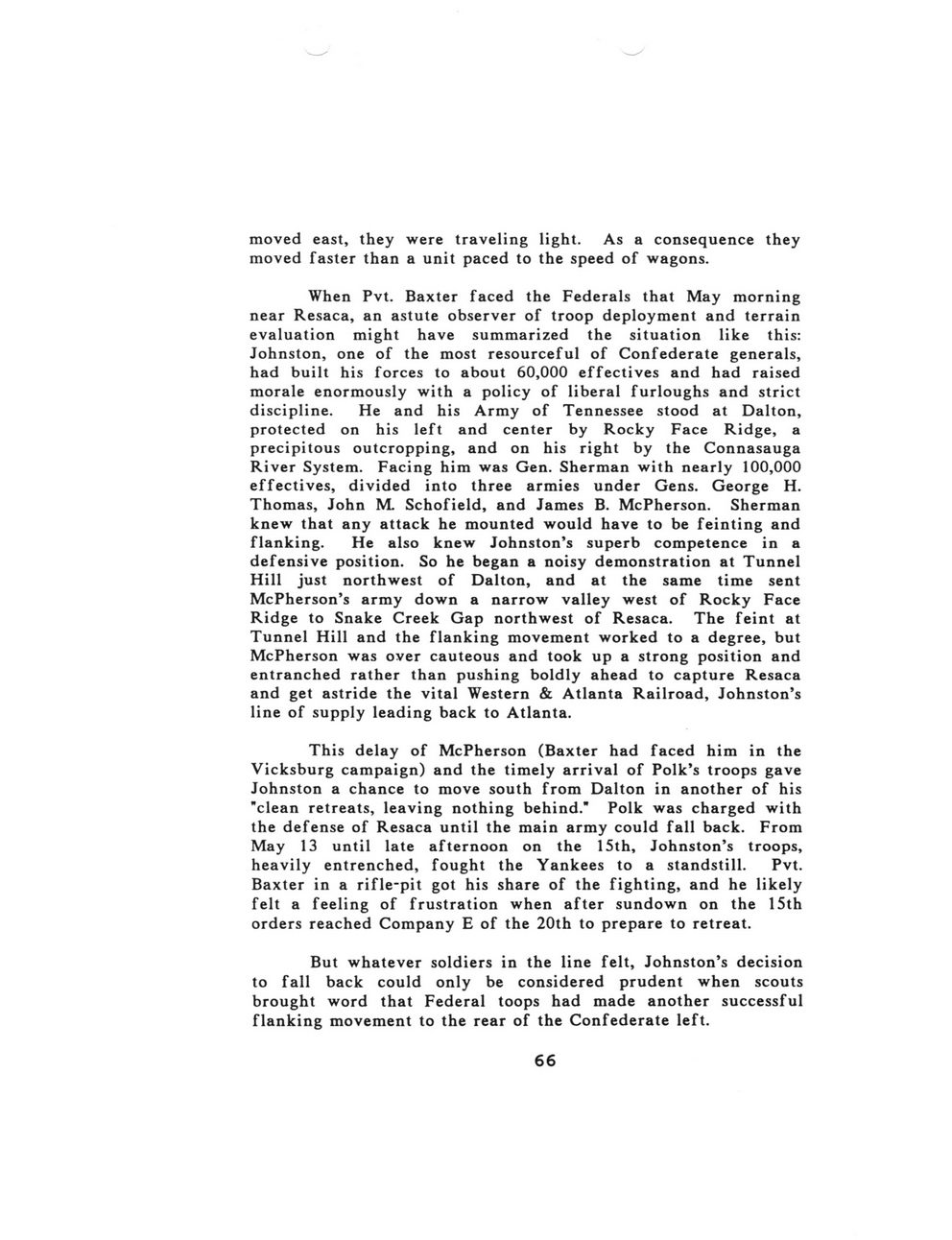This text was obtained via automated optical character recognition.
It has not been edited and may therefore contain several errors.
moved east, they were traveling light. As a consequence they moved faster than a unit paced to the speed of wagons. When Pvt. Baxter faced the Federals that May morning near Resaca, an astute observer of troop deployment and terrain evaluation might have summarized the situation like this: Johnston, one of the most resourceful of Confederate generals, had built his forces to about 60,000 effectives and had raised morale enormously with a policy of liberal furloughs and strict discipline. He and his Army of Tennessee stood at Dalton, protected on his left and center by Rocky Face Ridge, a precipitous outcropping, and on his right by the Connasauga River System. Facing him was Gen. Sherman with nearly 100,000 effectives, divided into three armies under Gens. George H. Thomas, John M. Schofield, and James B. McPherson. Sherman knew that any attack he mounted would have to be feinting and flanking. He also knew Johnston?s superb competence in a defensive position. So he began a noisy demonstration at Tunnel Hill just northwest of Dalton, and at the same time sent McPherson?s army down a narrow valley west of Rocky Face Ridge to Snake Creek Gap northwest of Resaca. The feint at Tunnel Hill and the flanking movement worked to a degree, but McPherson was over cauteous and took up a strong position and entranched rather than pushing boldly ahead to capture Resaca and get astride the vital Western & Atlanta Railroad, Johnston?s line of supply leading back to Atlanta. This delay of McPherson (Baxter had faced him in the Vicksburg campaign) and the timely arrival of Polk?s troops gave Johnston a chance to move south from Dalton in another of his "clean retreats, leaving nothing behind." Polk was charged with the defense of Resaca until the main army could fall back. From May 13 until late afternoon on the 15th, Johnston?s troops, heavily entrenched, fought the Yankees to a standstill. Pvt. Baxter in a rifle-pit got his share of the fighting, and he likely felt a feeling of frustration when after sundown on the 15th orders reached Company E of the 20th to prepare to retreat. But whatever soldiers in the line felt, Johnston?s decision to fall back could only be considered prudent when scouts brought word that Federal toops had made another successful flanking movement to the rear of the Confederate left. 66

Baxter, Marion Francis Marion-Francis-Baxter-Bio.-066